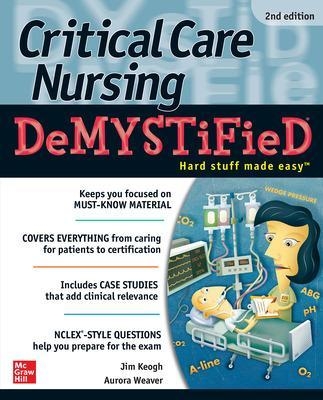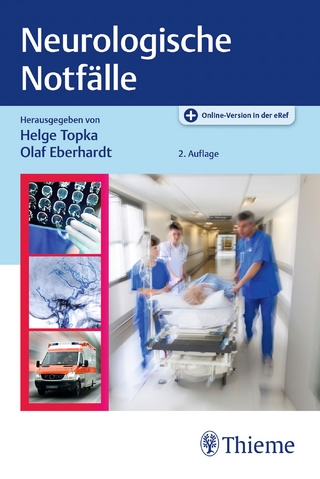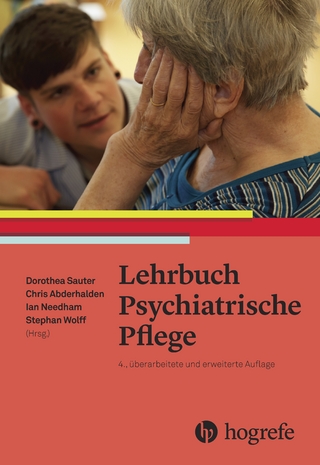
Critical Care Nursing DeMYSTiFieD, Second Edition
McGraw-Hill Education (Verlag)
978-1-260-44087-4 (ISBN)
Valuable to professional nurses who wants to transition into critical care nursing or students seeking to excel in their advanced studies, Critical Care Nursing Demystified, Second Edition is the book they need to quickly and easily understand the key concepts and advanced trends of this specialty.
In order to make the learning process as quick and effective as possible, each chapter contains lesson objectives, key terms, NCLEX®-style Q&A, and vignettes of nursing situations you are likely to encounter in the workplace. You will also find a comprehensive final exam and coverage that includes overviews of basic anatomy and physiology of target organ systems, detailed health assessments using the body systems approach, diagnostic studies utilized to confirm an illness, common critical procedures performed, current medications used in the treatment of the critical care patient, and implementation of the nursing process to identify and solve patient concerns.
Simple enough for students but challenging enough for professional nurses considering a switch from their current field to this specialty, Critical Care Nursing Demystified is the book you need to make your transition or entry into the field as smooth and painless as possible.
Jim Keogh is on the faculty of Columbia University teaching courses in its technology certification program. He has spent 15 years developing computer systems for major Wall Street firms such as Salomen, Inc. and Bear Stearns and has written several best-selling books for Prentice Hall and IDG. Faculty, Lehigh carbon Community College Schnecksville, Pennsylvania
CHAPTER 1 The Critical Care Nurse
Introduction
Education and Experience
Standards, Organizations, and Certification:
Promoting Excellence
Communication and Health Care Team Members:
Calling the Shots
Defining the Critical Care Nurse
Regulatory Issues That Impact the Critical Care
Environment
Future Challenges for the Critical Care Nurse
Review Questions
Answers
CHAPTER 2 Care of the Patient With Critical Respiratory Needs
Anatomy and Physiology
Assessment Skills for the High-Risk Respiratory
Patient
Collaborative Diagnostic Tools
Oxygen Delivery Systems
Advanced Airway Techniques
What Is Mechanical Ventilation
Commonly Used Respiratory Medications in
Critical Care for the Patient on MV
Respiratory Conditions Requiring Critical Care
Review Questions
Answers
CHAPTER 3 Care of the Patient With Critical Cardiac and Vascular Needs
Anatomy and Physiology of the Cardiovascular System
Assessment Skills
Collaborative Diagnostic and Laboratory Tools
Advanced Procedural Skills
Cardiovascular Medications Used in Critical Care
Medical CV Conditions Requiring Critical Care
Surgical CV Conditions Requiring Critical Care
Review Questions
Answers
CHAPTER 4 Care of the Patient With Critical Cardiac Rhythm Disturbance Needs
Assessment Skills
Cardiac Electrophysiology
How Does Cardiac Monitoring Really Work?
So What Do These Systems “See”?
So How Does a Nurse Do Detective Work on
These Rhythm Strips?
Types of Basic Rhythms
Where Do 12-Lead ECGs Enter the Picture?
Medications That Help With Rhythm Stabilization
Special Cardiac Devices to Help Maintain the
Patient’s Rhythm
Cardiac Arrest: Your Worst Nightmare
Review Questions
Answers
CHAPTER 5 Care of the Patient With Neurological Needs
Introduction
Anatomy and Physiology of the Nervous System
Neurological Needs: Assessment
Assessing Motor Movements—Strength and
Coordination
Normal Pupils
Assessment of Eye Movements (EOMs) or
Extraocular Movements
Oculocephalic Reflex or Doll’s Eyes Movements
Oculovestibular Reflex or Cold Caloric Test
Respiratory Patterns
Additional Assessments
Palpation
Percussion—Deep Tendon Reflexes
Other Responses
Auscultation
Collaborative Diagnostic Tools
Medications That Help With Symptoms
Medical Conditions Requiring Complex Care
Surgical Conditions Requiring Complex
Neurological Care
Review Questions
Answers
CHAPTER 6 Care of the Traumatized Patient
Introduction
Mechanisms of Injury (MOI)
Classification of Injuries
Evaluating Reports from the Field
Trauma Center Levels and Classifications
Medications Used in Trauma Care
Fluid Volume Replacement (FVR)
Care of the Patient With Specific Traumatic Injuries
According to the ABCs of Trauma Assessment
Review Questions
Answers
CHAPTER 7 Care of the Patient With Endocrine Disorders
Introduction
Major Organs of the Endocrine System to Be
Addressed
Review Questions
Answers
CHAPTER 8 Care of the Patient With Critical Renal Needs
Anatomy and Physiology of the Renal System
Assessment Skills
Collaborative Diagnostic and Laboratory Tools
Medications Commonly Used in Critical Care
Dialysis
Acute and Chronic Renal Failure
Review Questions
Answers
CHAPTER 9 Care of the Patient With Critical Hematologic Needs
Anatomy and Physiology of the Hematologic
System
Assessment Skills
Collaborative Diagnostic and Laboratory Tools
Medications Commonly Used in Critical Care That
Affect the Hematologic System
Blood Products Used for Hematologic Problems
Medical Conditions That Require Critical Care
Review Questions
Answers
Final Exam Questions
Correct Answers and Rationales
Index
| Erscheinungsdatum | 19.07.2021 |
|---|---|
| Zusatzinfo | 70 Illustrations |
| Verlagsort | OH |
| Sprache | englisch |
| Maße | 188 x 231 mm |
| Gewicht | 1037 g |
| Themenwelt | Pflege ► Fachpflege ► Neurologie / Psychiatrie |
| ISBN-10 | 1-260-44087-7 / 1260440877 |
| ISBN-13 | 978-1-260-44087-4 / 9781260440874 |
| Zustand | Neuware |
| Informationen gemäß Produktsicherheitsverordnung (GPSR) | |
| Haben Sie eine Frage zum Produkt? |
aus dem Bereich


